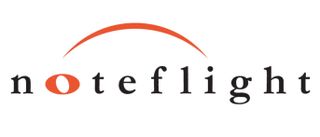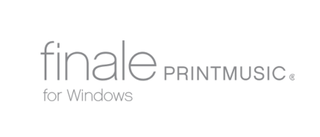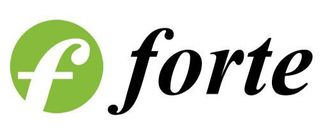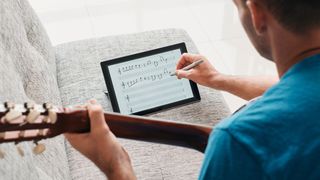Get the best music notation software and composing can be made a whole lot easier. That means getting your inspiration down with less hassle and far faster than you might do now. It also means you have it backed up and accessible for editing and sharing as you need.
But don't think it means you can't write out your music, as some of the best music notation software will detect your writing and convert it directly. This is ideal for writing as you're comfortable but having it all digitized when you're done too.
Since these programs are built for ease of use, to let you focus on the art of making music, they're very intuitive. That means that even a beginner can get started using this software. However, it still offers the depth to serve a professional in most cases.
Other useful system you may want to help with your music making include the best audio editing software and the best audio converter software.
1. Notion 6: Best music notation software overall
Why you can trust Top Ten Reviews

Notion 6 was the most comprehensive software that we tested, packing in all the crucial editing tools that you could possibly need. It’s really adaptable too, allowing composers to input notes either by using a MIDI keyboard, playing virtual on-screen instruments or by placing notes directly onto the digital staves. A recent software upgrade means that you can even use a tablet and smart pen to write your score, as the program is capable of recognising handwriting.
We were really impressed with its instrument sample library, which includes sounds from the likes of the London Symphony Orchestra, Neil Zaza and the Wooten brothers. The software also works nicely across Mac, Windows and iOs platforms, so you can start writing a composition on your home computer and finish editing it on your iPad or iPhone.
It has an intuitive layout, with well arranged tool palettes. And the developers are constantly updating and fine tuning the program, so new features regularly appear on the interface. The latest additions include a wider range of playback instruments and improvements on its synchronized video window, which allows you to watch a movie clip and accurately compose a piece to fit alongside this.
- Read our Notion 6 review
2. Sibelius: Best professional music notation software

This is a serious tool, aimed at professional musicians - but it actually has a surprisingly easy-to-navigate interface, so it doesn’t feel overwhelming if you’re new to composition. Like Notion 6, this software is regularly updated and tweaked by a team of developers. But we were slightly more impressed with the instrumental sounds that are available in Notion, and we couldn’t find a ‘video’ window in Sibelius that would allow us to watch a movie and score it at the same time. So it takes second place in our guide.
All of that aside, it’s a really impressive program. You can input notes with a computer mouse, virtual piano or virtual guitar fretboard or by connecting a MIDI keyboard to the USB port on your computer. It also automatically adds the correct rests and note appearances, so you can work through a melody quickly without worrying about editing the score as you go.
The program has great collaboration tools, too. When you finish a score or reach a good stopping point for collaboration, you can hit the share button on the toolbar to send your work to the Sibelius cloud. Avid’s MediaCentral Platform then processes it and sends you a URL that can be opened on any computer with any web browser. If you’re collaborating with another Sibelius user, you can both edit the score, and when either one of you presses the Push button, the changes will be saved without generating a new URL or exporting a file.
There is an accompanying app for the software program, but you’ll have to pay a couple of dollars for it. This app allows you to turn your iPad into a kind of notebook, so you can use a smart pen to scribble notes directly onto your staves.
- Read our Sibelius review
3. MuseScore: Best free music composition software

MuseScore is free, open-source notation software that’s compatible with Windows and Mac operating systems. Even though it’s free, it includes many of the same features and tools found in the best for-pay programs we reviewed.
Its interface is clean and easy to navigate. The left side of the screen displays all the available input tools, and the inspector to the right of the score shows information about the notes you input. We had no problem connecting our MIDI keyboard, but if you don’t have one at your disposal, you can MuseScore’s virtual piano to input notes. You can also use your mouse or keyboard shortcuts to add notes to the staff.
MuseScore can import MusicXML and standard MIDI files from other popular notation software. When your score is complete, you can export it as either a graphic file, MusicXML file or audio file. The instrument samples aren’t as realistic or dynamic as those in the best notation programs we tested, but if you are interested in composing music with software, MuseScore is an easy way to learn for no investment.
- Read our MuseScore review
4. Noteflight: Best value online music notation

There are three versions of Noteflight, including the free Noteflight Basic, which allows you to create and edit up to 10 scores. Noteflight Learn is specifically designed for educators. It syncs with Google Classroom and other popular learning management systems. Noteflight Premium is one of the cheapest premium music notation options we reviewed.
You can't permanently download this software, but the online platform allows you to access your account from any computer with an internet connection. The toolbar is customizable and includes everything you need to create and edit simple arrangements. You can also import and edit MIDI and MusicXML files from other notation software. However, the online platform gets bogged down and reacts slowly with complex compositions.
The Premium version is a better choice if you use notation software on a regular basis, and it has similar workflow to the best programs we tested. There’s an audio recording feature for adding audio segments to any score as well as 85 built-in instrument sounds. Also, the Premium subscription gives you access to the marketplace, where you can sell and market finalized compositions. The program's volume mixer is easy to use and a helpful tool to get all the audio levels correct before you export an MP3 or WAV file to share with other musicians.
- Read our Noteflight review
5. Finale PrintMusic: Best beginner music notation software

Finale PrintMusic has an intuitive workflow and an easy-to-navigate interface. It boasts an impressive set of note entry tools and editing palettes, and they are all easy to find and use.
You can enter notes with your computer’s mouse, a MIDI keyboard or a computer keyboard – even though it doesn't have a virtual piano, there's no shortage of input options. When you finish entering notes, you can listen to your composition with the Human Playback feature, which performs your music using one of the hundreds of built-in instruments, including strings, horns and percussion instruments.
Finale has a great list of shareable output formats. It outputs publisher-quality printable files as well as PDF and graphic files. You can also output an MP3 file to share an audio version of your finalized score. Finale is the most recognized name in music production software because it is easy to use and has a great selection of notation tools, but its PrintMusic software is designed for beginners specifically.
- Read our Finale PrintMusic review
6. Forte Home: Best music notation software with app

Forte has two great companion apps: one that scans sheet music using the camera on your phone or tablet and a reader app that opens and plays back compositions from the desktop application with your mobile devices.
They are free and available for Android and Apple devices. The desktop application isn’t as visually appealing as some of the other programs we tested, but it has all the tools needed to create simple or complex arrangements.
You enter notes using a MIDI keyboard, virtual piano or your computer’s keyboard. While you input notes, Forte keeps track of the number of counts missing from a measure and automatically adds the appropriate rests to speed up workflow. Forte also has a volume mixer to control volume and panning for each instrument. When your composition sounds perfect, you can export an MP3 or WAV file to share with other musicians.
- Read our Forte Home review
How we tested
To test the software, we bought and downloaded each program, then evaluated it for features, ease-of-use and export options. We checked if its easier to notate with the program than it is to do so by hand. We also checked whether there are hidden steps to connect input devices, such as MIDI keyboards and microphones, and used the used the programs’ virtual pianos and virtual guitar fretboards to input notes.
After we created a score, we used each software’s playback engine to test how realistic its virtual instruments sound. Our favorite programs have a good variety of instruments in their libraries, including percussion instruments, strings and horns.
Finally, we tested each application’s import and export capabilities. We imported a variety of files, including MIDI files, MusicXML files and graphic images, to see how easy each program makes the process. We then exported the compositions in a variety of formats to check that they were legible and accurate, which is important when you send your scores to other musicians or composers.
How much does music notation software cost?
The price of music notation software does vary with the lower end at around $100 and the higher priced software breaking the $500 mark. For basic needs, such as simple compositions for small bands, then you are going to be served fine by the $200 option.
If you're into more complex arrangements for bigger bands or orchestras then you will need something more advanced, like Sibelius. This is where that price pushes the $500 mark and beyond.
For a free option there is MuseScore, which works well for very simple lead sheets. This offers surprisingly decent features even when compared to the paid for options.
Music notation apps
These notation apps aren’t as comprehensive as the above software packages. They’re designed for smaller screens and less powerful devices, so they don’t pack in as many features. They can still be useful tools though, especially if you need to do some composition on the go. Here are a few of the main ones that are currently available.
Maestro
A fairly bare-bones offering, this app allows you to tap to insert things like notes, accidentals and rests onto digital staves. A useful tool for learners or complete beginners, it comes with over 100 instrumental playback options, which are of a surprisingly good quality. It’s mostly free (you have to pay to remove the ads) and it allows you to export your creation as an audio file or image.
Notation Pad
Available on iOs or Android devices, this app is a useful tool for jotting down musical refrains and quick compositions. Zoom tools and a cleaner layout make it a little easier to navigate than Maestro, but intrusive ads make it a less fun experience overall. Piano playback comes free, but you’ll have to pay if you want to listen to your piece played by other instruments.
Symphony Pro
Exclusively available on Apple products, this app isn’t free but it is a fairly useful tool. It has handwriting recognition, but it also lets you add and edit notes by tapping on the score. You can also ‘lasso’ sections of notes, to transpose or edit them, and it comes with MIDI import options too. It doesn’t feature all the bells and whistles of the full software packages, but it offers a good middle ground.
StaffPad
This clever app turns your messy scribbles into engraved compositions. Using a smart pen and touchscreen device, you can write notes directly onto the staves and the software will turn them into a properly formatted composition. It’s not the cheapest app out there, but it probably has the most accurate handwriting interpretation tools. If you’re simply looking for an intuitive app that can replace your music manuscript paper, it could be a good option, but it doesn’t work with things like MIDI keyboards.

Sheet music reader apps
A sheet music app is an invaluable tool for taking finalized arrangements to the stage or rehearsal. All the notation programs we tested export PDF files that display on any mobile device, but sheet music readers have better organization features and allow you to annotate a score and export it with markup. Here are our favorite sheet music apps for iOS and Android devices.
forScore
This app is only available on iPad, but it is the best sheet music app available. It’s compatible with popular cloud storage services like Dropbox and Box, or you can upload PDF or MusicXML files from your computer or email inbox. Once you finish adding arrangements, you can search the library by composer, genre or key. forScore supports half-page turns, which allows you to see the bottom half of one page and the top half of the next page simultaneously. It also syncs with Bluetooth page turner pedals for hands-free page flips.
Orpheus Sheet Music Pro
If you prefer to use Android hardware, Orpheus is the best sheet music app on that OS. It doesn’t have as many organization and file import features as forScore, but the interface is easy to use and includes an annotation tool. There’s a free version that displays ads and limits chart uploads to 30 total. Orpheus has support for Bluetooth hands-free page turners, and syncs with Dropbox. This app isn’t compatible with as many import file types as forScore, but every notation software we tested exports PDF files, which is the preferred file type for Orpheus.
What to look for in music notation software
Picking out the best music notation software can be difficult if you're new to it all. But know which features you should be looking out for and it can make the task simple. We've laid out what you will want to think about when buying, so you find the perfect option for your needs.
Music Features
This is an important point as you may be a versatile composer that needs software which will keep up with you. So be sure to look out for one that offers more than one style of sheet music. But if you're going to be using a particular instrument, then it's worth going for a specialized software that caters to that individually.
Input/Output
While using a MIDI-compatible tool can be a direct way to make music and have it stored digitally, you may not have that kit. In which case you are still served by making and editing using a mouse and keyboard as input devices.
While using a virtual keyboard in the software can be a helpful option in some cases. You may want more physical results so it's worth looking for software that lets you print off your music sheet too.
There are also specific customization options, like smart keys and voice commands that work well for those with accessibility needs.
Editing Features
Editing is key for refining the end result but this can take time so if you want to keep that to a minimum then look for software with advanced editing features.
Since these features vary massively and you may not know which works best for you, it's worth trying a few first. There are plenty of free trials in the above options so perhaps try a few and see which one is the perfect composition partner for you.


